Patrick Nagatani
Nuclear Enchantment 1988-1993
ASG 1991
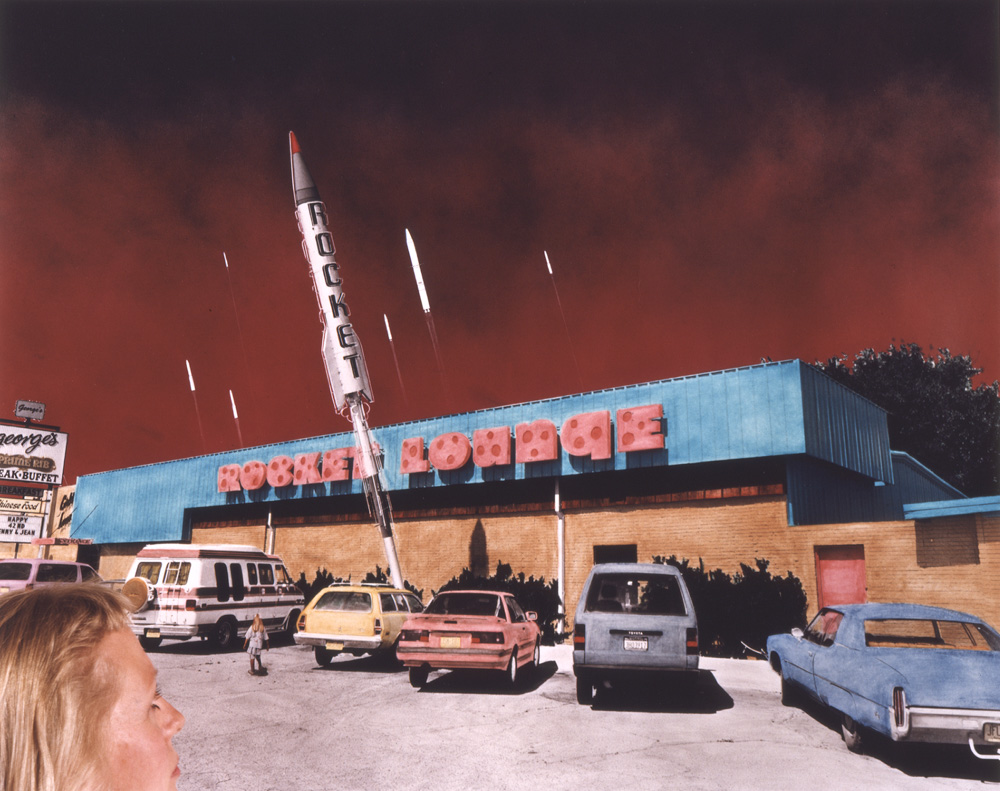
Rocket Lounge, Alamagordo, New Mexico, 1989
There are forty images in this body of work.
"Since my arrival in New Mexico, twenty-three years ago, I have become increasingly aware of the various activities in the scientific, military, mining, medical, etc. industries here in my home state. The historical as well as the contemporary development of the nuclear industry as well as its impact on this state has been my prime emphasis of investigation. A concern of this work is to promote a dialogue with and about the contemporary/historical landscape of the state that contains the most extensive nuclear weapons research, management, training, and testing facilities and organizations in the United States.
My intentions are to raise public consciousness about the effects of New Mexico's nuclear industry that continues to grow despite the damage it has already caused and will continue to bring to the state. The series, Nuclear Enchantment, attempts to awaken the many New Mexicans who still believe nuclear power poses no threat and that defense spending promotes the economy. Culturally and geographically connected to New Mexico, it is perceived by the elite powers as a place that can be abused and even reduced to rubble.
Are we a society so blinded by the powers of science that we will continue to support a destructive industry rather than seeking alternative solutions? Many of the photographs in Nuclear Enchantment are of actual sites presided over by a cast of ancient mythic figures. I hope that they are captivating and enigmatic. I want them to remind us of the spiritual poverty of the technical age. In some of the work I use figures from the great nineteenth century Japanese woodblock artist Hiroshige whose art commented on Japan's transition from ancient Shintoism to Westernization - a path that ultimately led to Hiroshima.
In my work I intentionally show a leveled world. Polluted skies, contaminated earth, nuclear explosions, fantastic happenings are all seen under the same light (regardless of the effect they have on people that are actually experiencing such events, for whom the events are not images, but occupy their moment); natural, social, mythic, physical, and psychological experiences are all leveled as images. Even I (the artist) becomes an image, a desensitized subject in several of my own installations. The leveling is by choice, as in Baudrillard's "active indifference". (Jean Baudrillard, In the Shadow of the Silent Majority, 1983)
My reality and depiction is within this leveled world. It is within what known scientific information we learn and retain. It is within this social/political/economic period of time. And it is within photography, painting, installation, and performance. I hope that Nuclear Enchantment is thought provoking, yet technically brilliant, and richly beautiful despite the grim tidings. Like the macabre yet jewel-like images from medieval books of hours dealing with the Office of the Dead, I point a boney finger at the contemporary dance of death we are on the verge of joining." [www.patricknagatani.com]
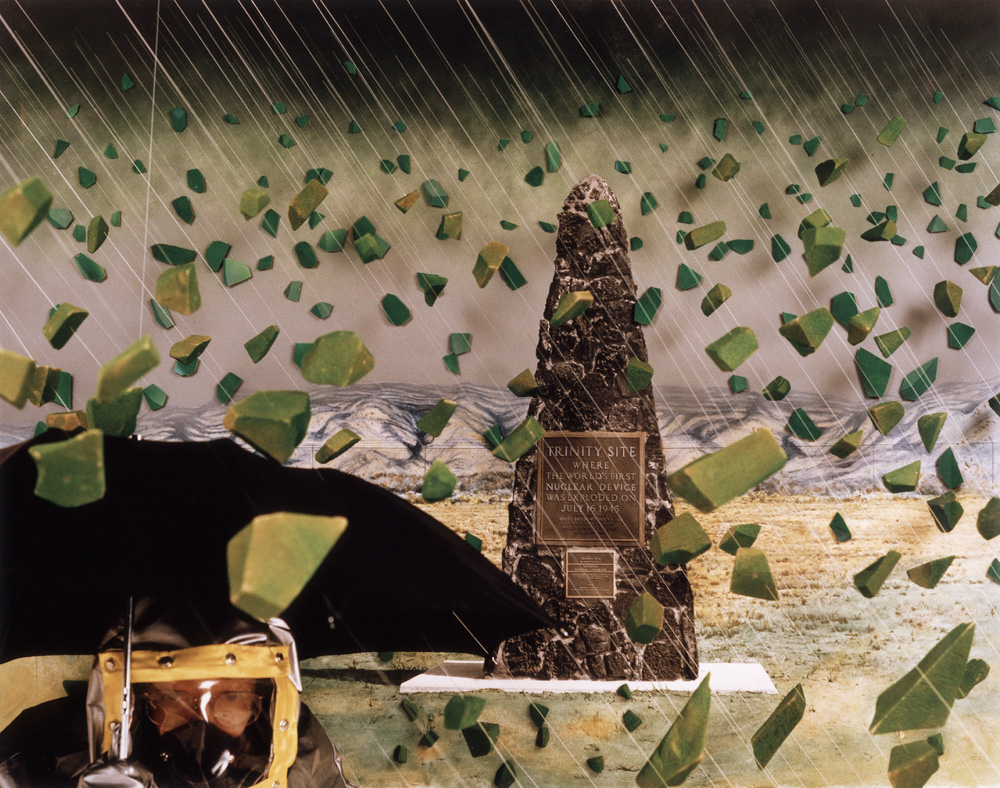
Trinitite, Ground Zero, Trinity Site, New Mexico, 1988
In Nuclear Enchantment Nagatani continued to fabricate reality as he explored the true after effects of uranium mining, radioactive mine tailings, missiles, nuclear waste, the military industrial complex, national nuclear labs, accidental dropped nuclear bombs, etc; again the mix of the potential apocalypse with regular Pueblo Indians, student in classes, diners, Kachinas, a barbecue grill all becoming observers or participants.
, Residential Backyard Facing Hollowed-out Manzano Mountain Nuclear Storage Area, Kirtland A.F.B., Albuquerque, New Mexico,1990.jpg)
F-16 Falcons (U.S.A.F. Thunderbird Team), Residential Backyard Facing Hollowed-out Manzano
Mountain Nuclear Storage Area, Kirtland A.F.B., Albuquerque, New Mexico,1990
This is a series on a grand scale, thought-provoking, technically brilliant and richly beautiful despite its grim tidings.

Japanese Children's Day Carp Banners, Paguate Village, Jackpile Mine UraniumTailings,
Laguna Pueblo Reservation, New Mexico, 1990
In "Golden Eagle, United Nuclear Corporation Uranium Mill and Tailings, Churchrock, New Mexico" (1991) and "Japanese Children's Day Carp Banners, Paguate Village, Jackpile Mine Uranium Tailings, Laguna Pueblo Reservation, New Mexico" (1991) Nagatani used figures from the great nineteenth century Japanese woodblock artist Hiroshige whose art commented on Japan's transition from ancient Shintoism to Westernization - a path that ultimately led to Hiroshima.
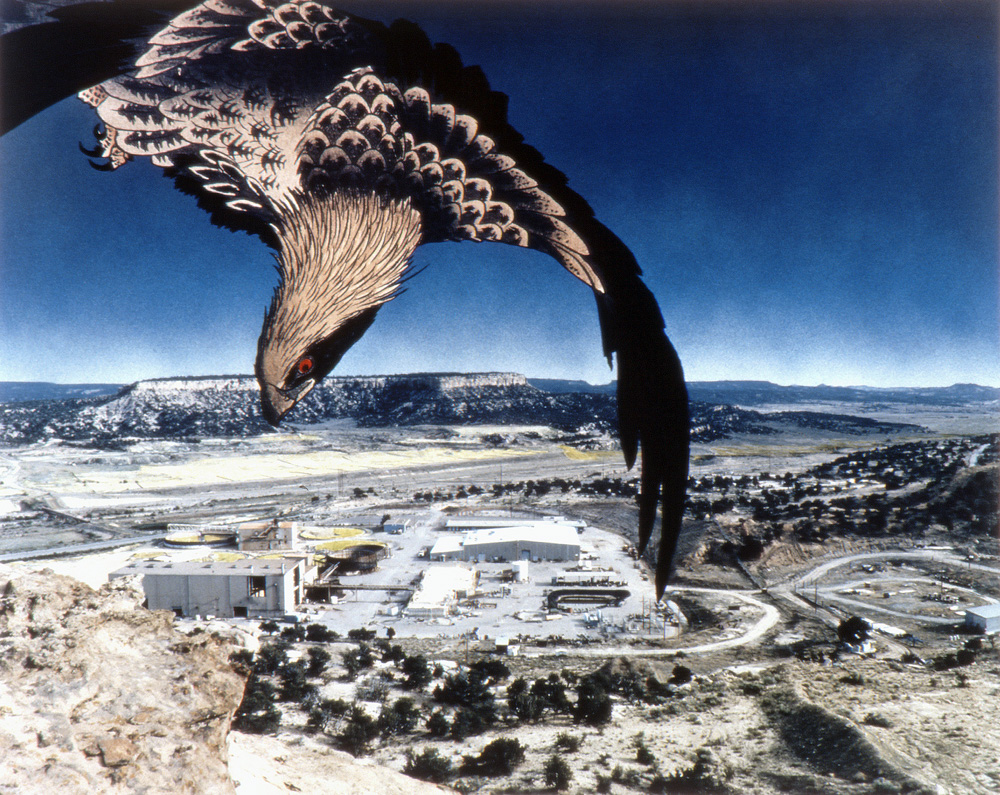
Golden Eagle, United Nuclear Corporation Uranium Mill, New Mexico, 1990
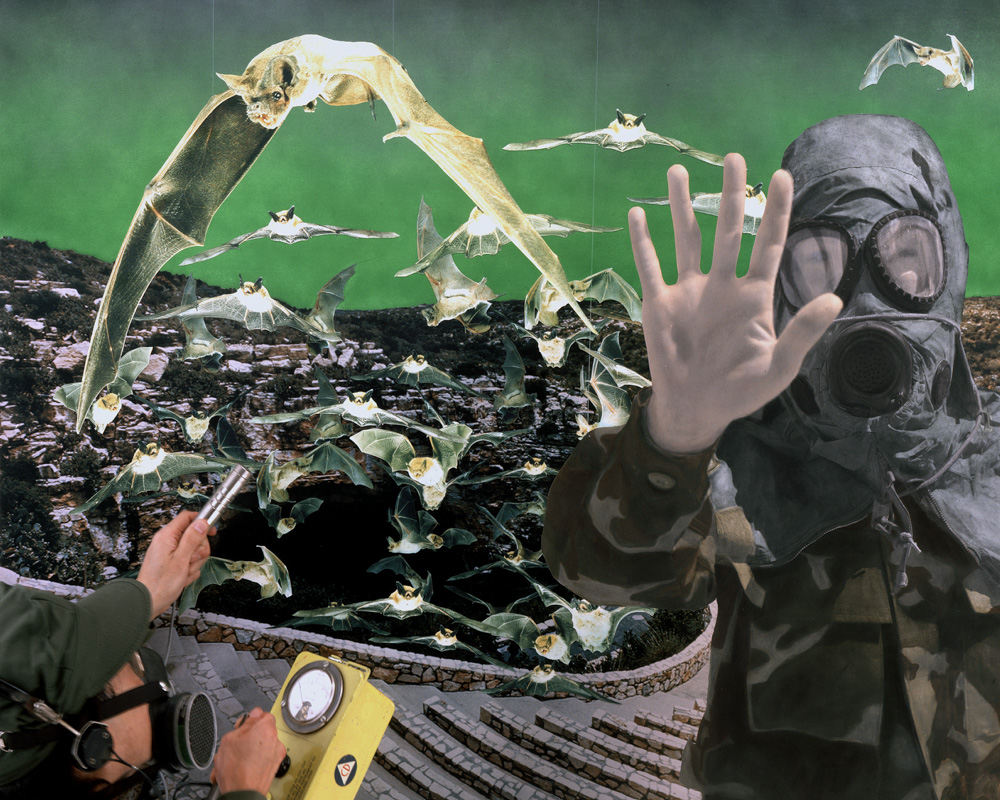
Fin de Siecle', Bat Flight Amphitheater, Carlsbad Caverns, New Mexico, 1989
, 5 1-2 Miles So. of Gibson Blvd., Albuquerque, New Mexico, 1991.jpg)
B-36/Mark-17 H-Bomb Accident (May 27, 1957), New Mexico, 1991

Contamination Area, Building #3, Sandia National Laboratories, New Mexico, 1989

Fat Man And Little Boy, F-111D's, 27th Tactical Wing, Canon Air Force Base,
Near Clovis, New Mexico, 1990
 Nuclear Powered Vehicles, West Mesa, Albuquerque, New Mexico, 1991.jpg)
Generation To Generation, Strategic Defense Initiative (SDI), New Mexico, 1991
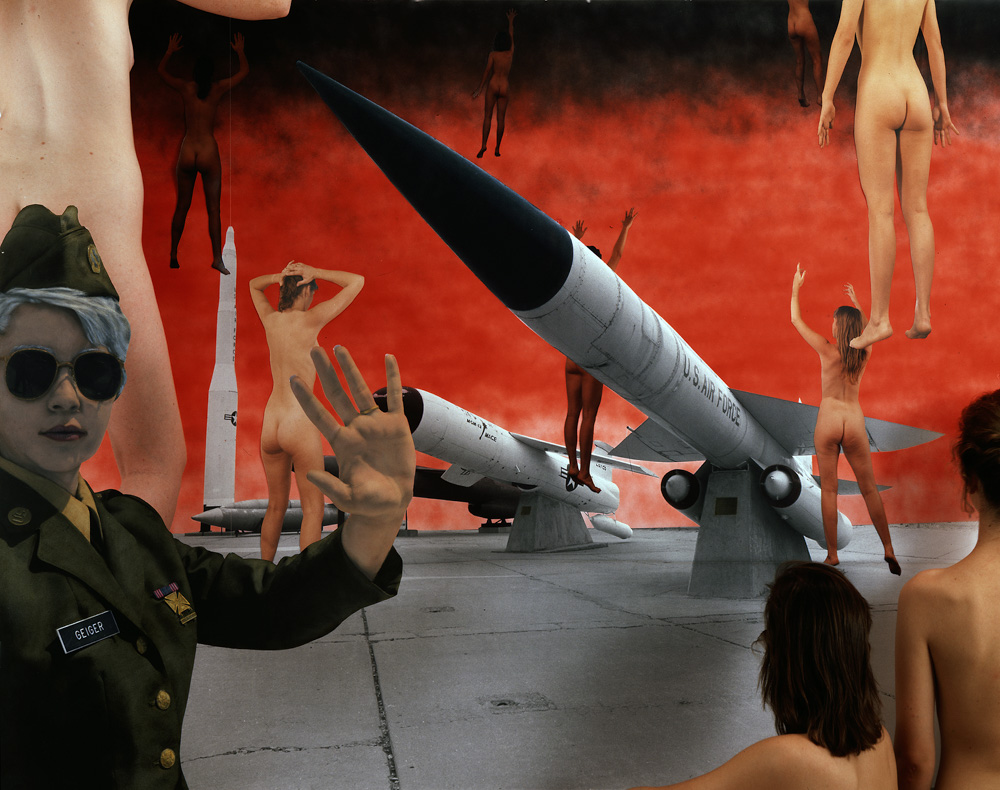
Lysistratus, National Atomic Museum, Albuquerque, New Mexico, 1989-1993
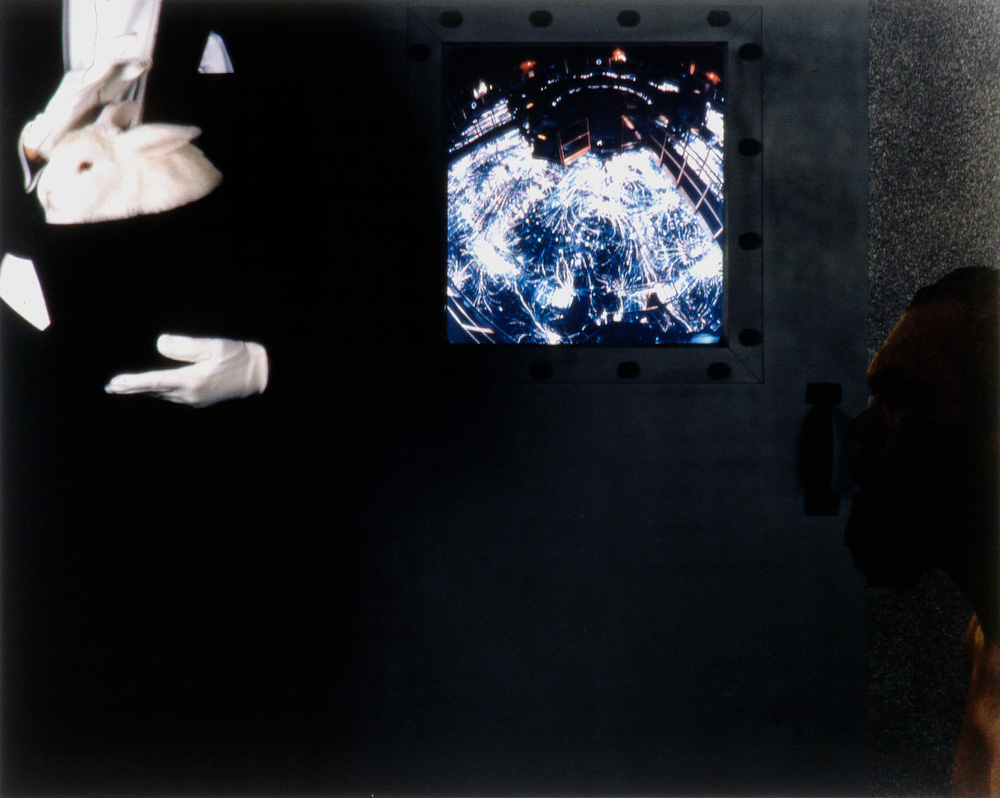
Magic/Myth/Megaton, Particle Beam Fusion Accelerator II, New Mexico, 1990
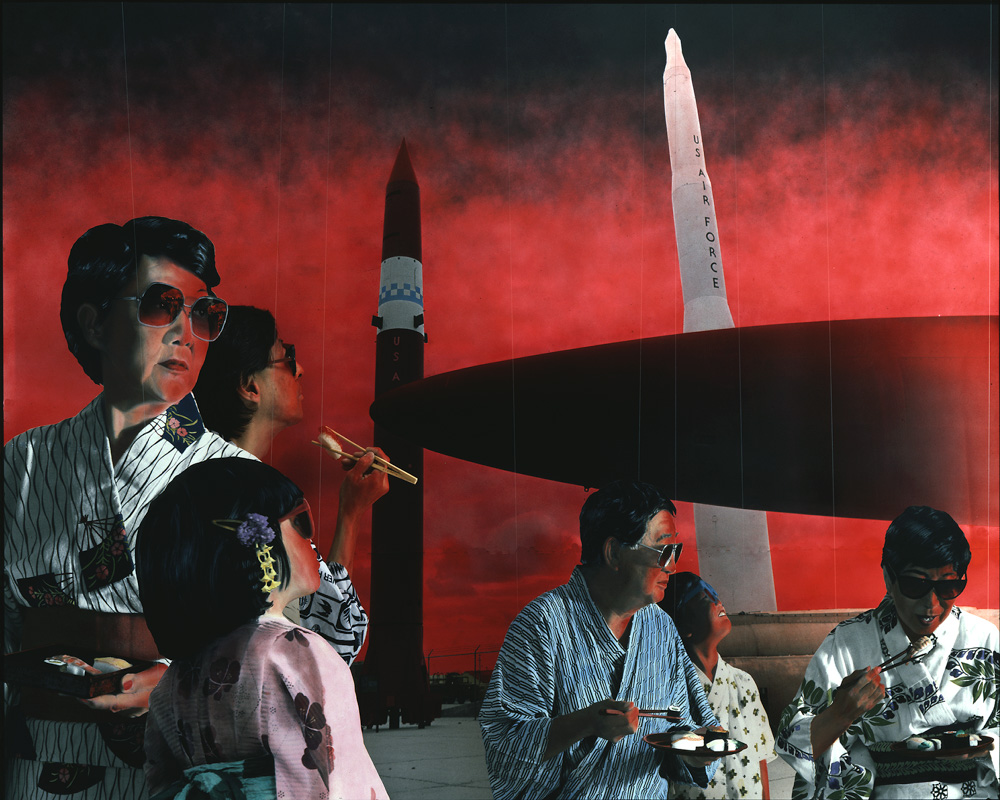
National Atomic Museum, Kirtland Air Force Base, New Mexico, 1989
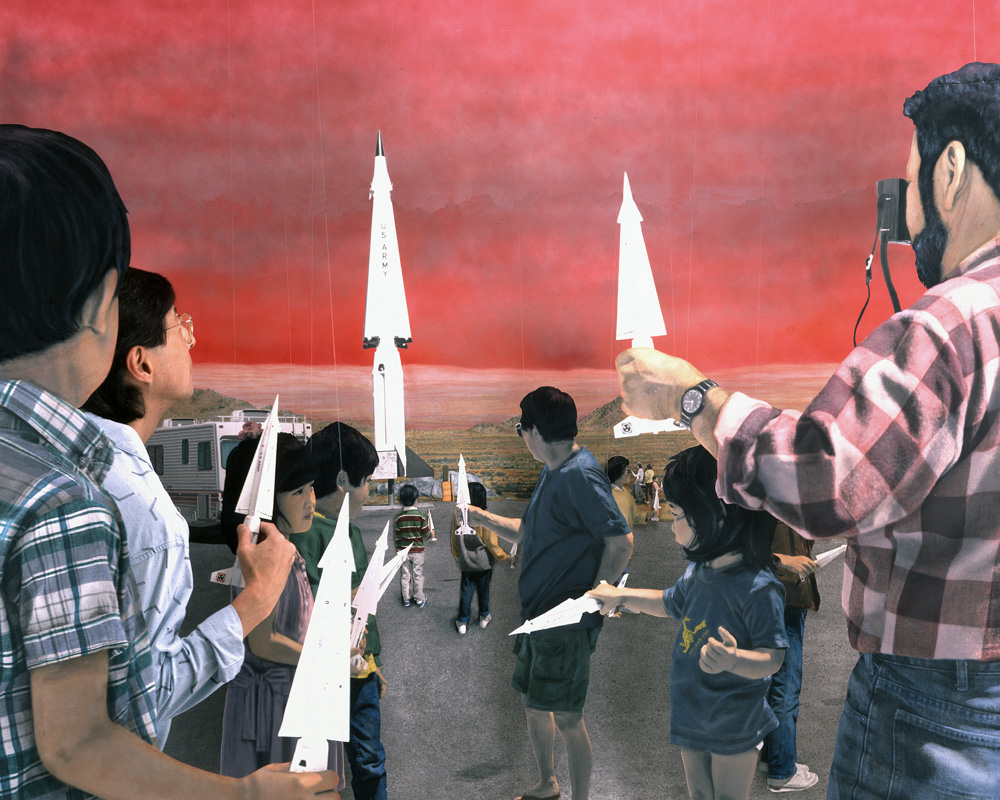
Nike-Hercules Missile Monument, St. Augustine Pass, New Mexico, 1989
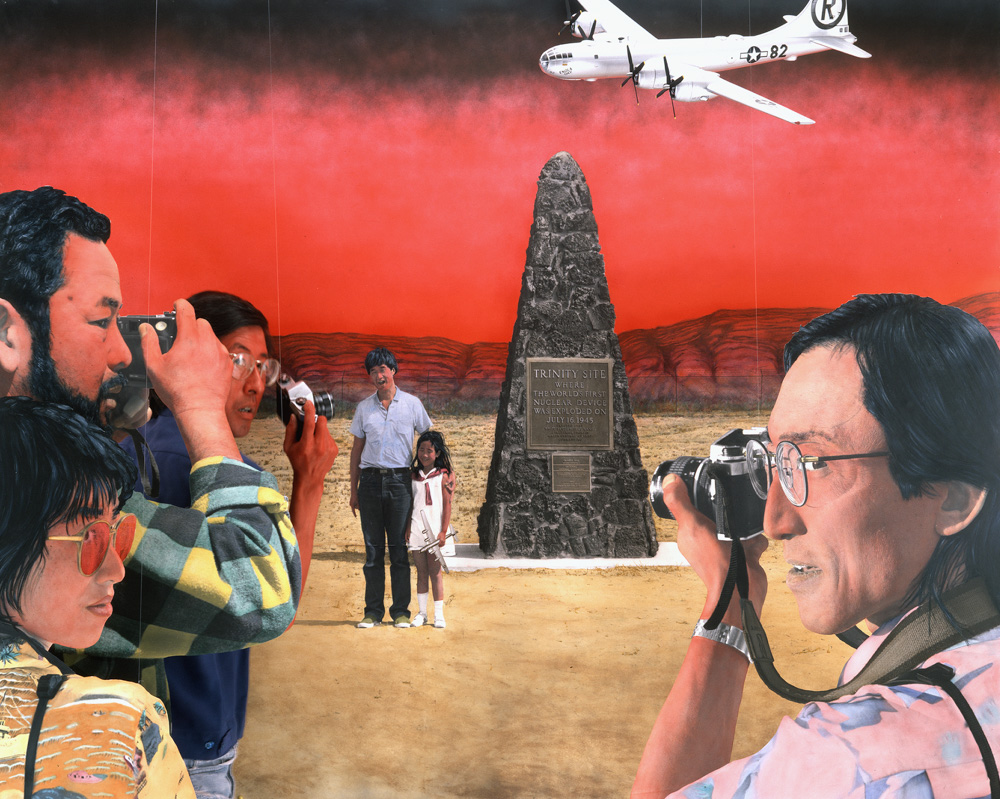
Trinity Site, Jornada Del Muerto, New Mexico, 1989

Uranium Tailings, Anaconda Minerals Corporation, Laguna Pueblo Res., New Mexico, 1990

Kweo/Wolf Kachina, United Nuclear Corporation Uranium Tailings Spill, New Mexico, 1989
Nagatani produced the forty images in "Nuclear Enchantment" in various ways. Four were photographed from 7 to 9 foot installations constructed by the artist that included life-size figures. Others were made from 4 to 5 foot installations with 30" x 40" color prints as backdrops incorporating objects arranged in the foreground. The scene was hand colored before being photographed as a 4 x 5 final negative from which the finished prints were made. Other works began as 20" x 24" color prints with cut-out images collaged on top. The remarkable seamless quality of the finished images was achieved by peeling color material to a tissue-thin gelatin surface and beveling the edges of cut-outs. The effect is images that appear both documentary and surreal at the same time. Several photographs were made on site from 2 1/4 x 2 1/4 negatives. The strong colors that make the works so appealing were hand applied to the prints before they were re-photographed, or they were produced by masking and filtration in the darkroom.

Radium Springs, New Mexico, 1989